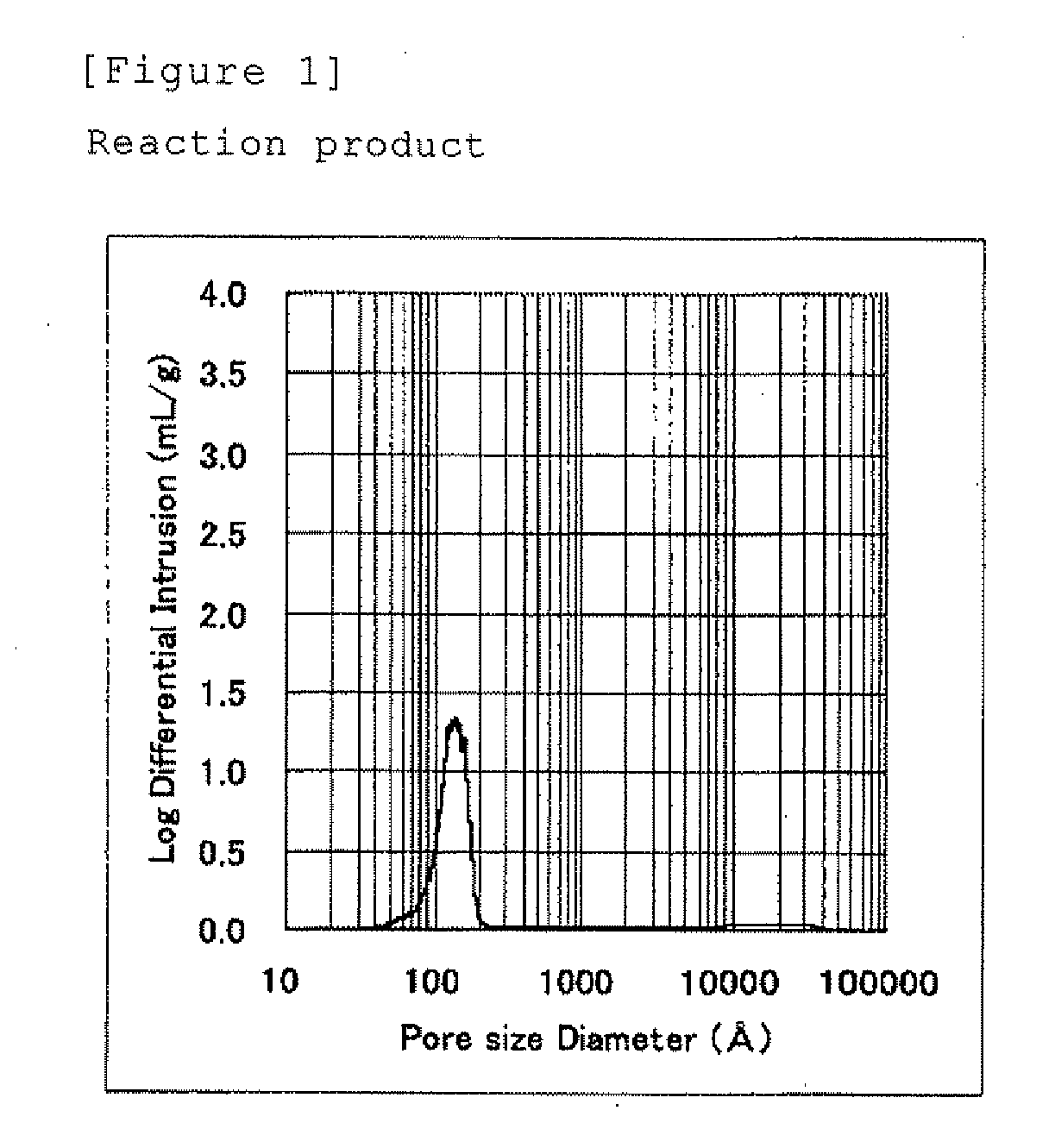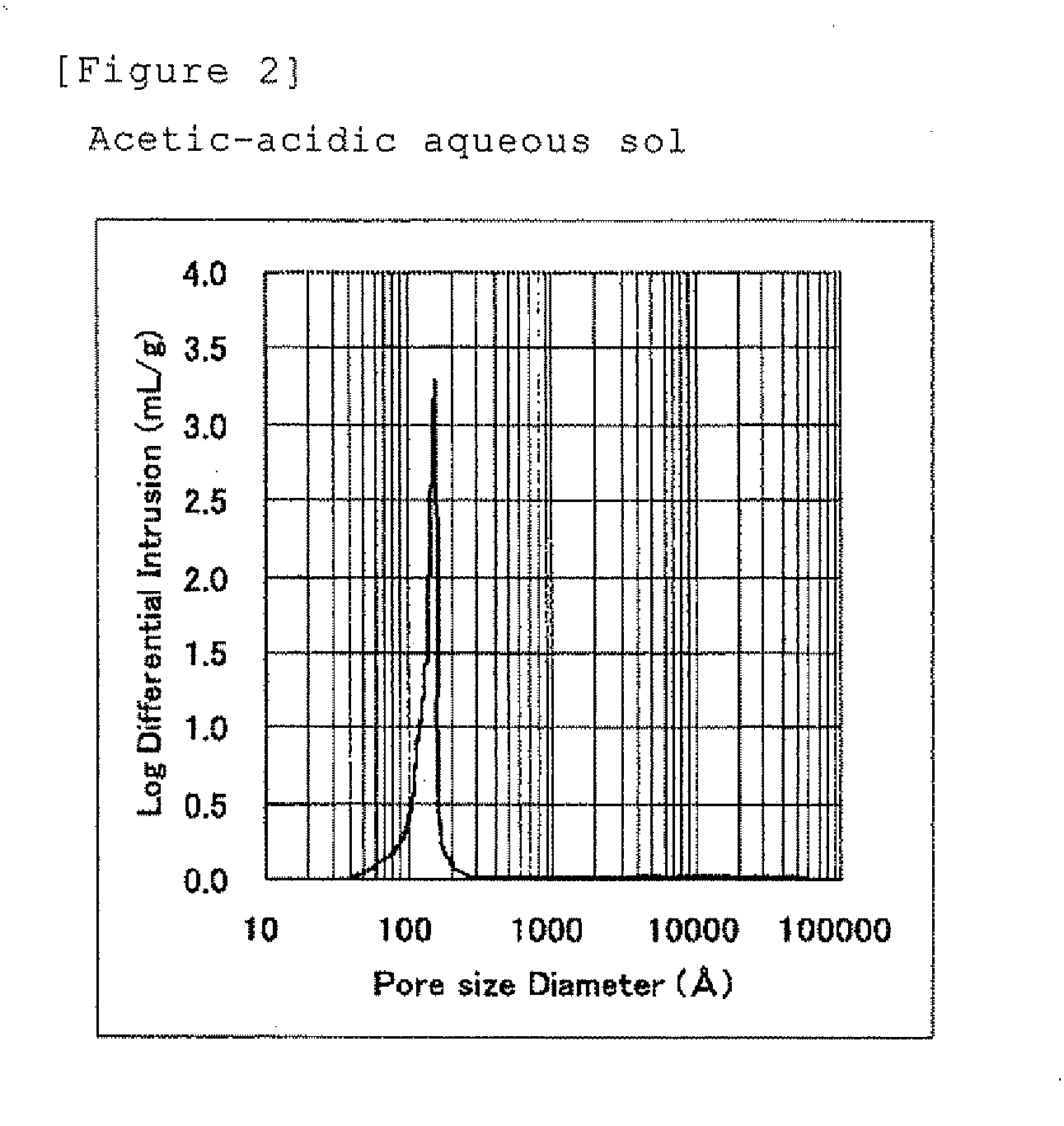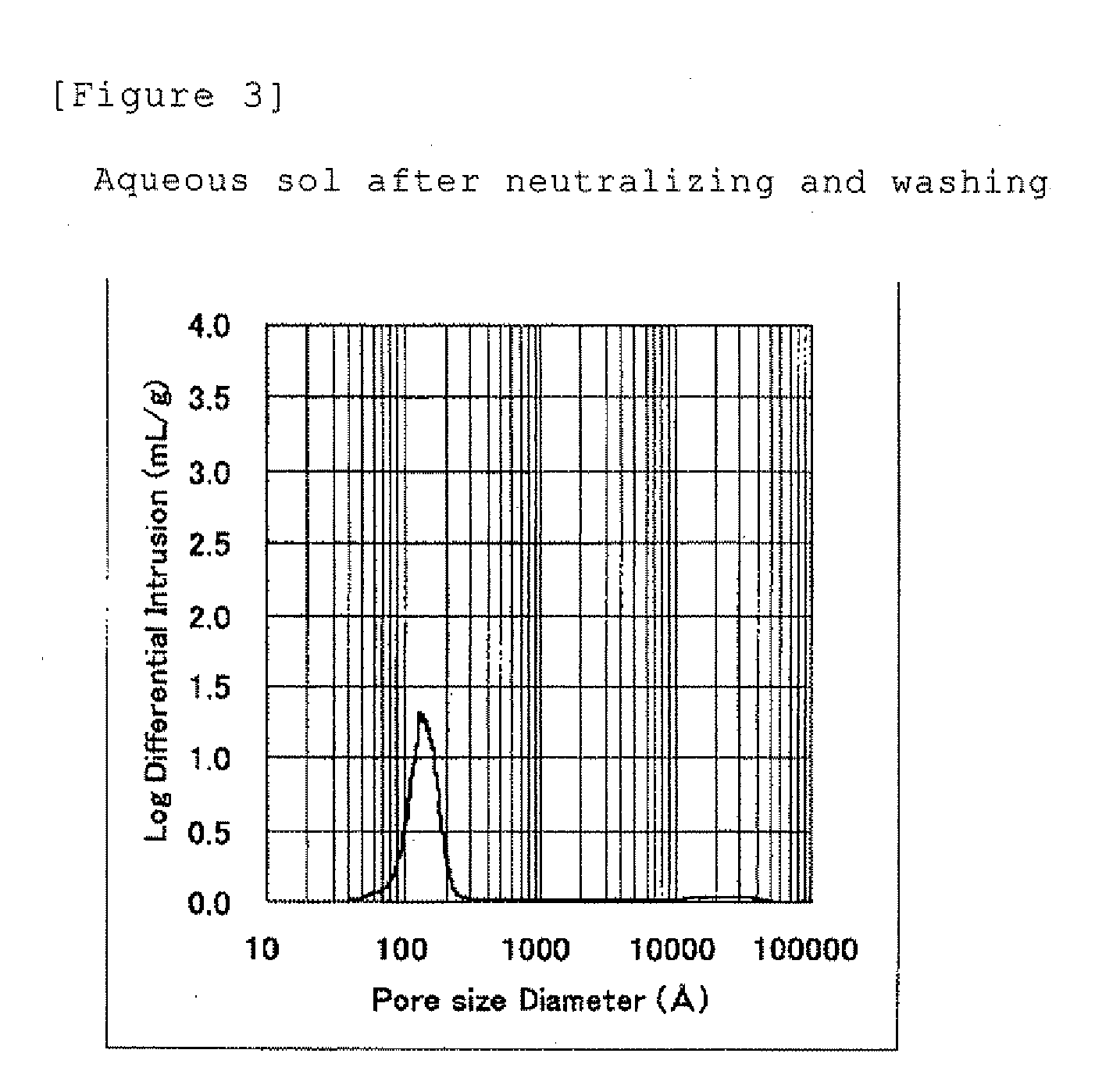Particulate Alumina Composition and Process for Production Thereof
a technology of alumina composition and alumina composition, which is applied in the direction of catalyst activation/preparation, physical/chemical process catalysts, aluminium compounds, etc., can solve the problems of large amount of by-product waste generated, difficulty in controlling the pore structure of alumina obtained from this dispersion, and high energy consumption of conventional methods. achieve the effect of increasing the heat transfer rate of the reactant, reducing pressure, and increasing the heat transfer ra
- Summary
- Abstract
- Description
- Claims
- Application Information
AI Technical Summary
Benefits of technology
Problems solved by technology
Method used
Image
Examples
example 1
[0073]220 g of 16.0 wt % of nitric acid aqueous solution was added to 500 g of alumina having an Al2O3 concentration of 93.6 wt %, an average particle diameter of 50 μm, and ρ and χ crystalline structure, which was obtained by rapid dehydration of aluminum hydroxide (gibbsite) in thermal air current, to prepare an wet particulate having an Al2O3 concentration of 65 wt %, a molar ratio of HNO3 / Al2O3 of 0.12 and a molar ratio of H2O / Al2O3 of 2.63.
[0074]A packing density of this wet particulate was 0.90 g / ml, and a volume ratio of solid-liquid-gas three-phase was as follows: a solid phase of a alumina source was 21 vol %, a liquid phase of nitric acid aqueous solution was 26 vol % and a gas phase of air was residual 53 vol %.
[0075]This wet particulate was filled into an autoclave and the autoclave was heated at 200° C. for 10 hours without stirring and reducing the pressure, and then the mixture was cooled. The obtained reaction product was a particulate alumina composition composed of...
example 2
[0082]An acetic acid aqueous solution was added to 500 g of alumina source used in Example 1 to prepare a wet particulate in a solid-liquid-gas three-phase having an Al2O3 concentration of 59 wt % and a molar ratio of CH3COOH / Al2O3 of 0.25.
[0083]This wet particulate was filled up into an autoclave and a pressure in the autoclave was reduced to 0.06 MPa by a vacuum pump, and then the temperature was raised up to 180° C. and the autoclave was heated for 6 hours without stirring. After the reaction was completed, the temperature in the autoclave was lowered by releasing the vapor from the autoclave, and then the reaction product was taken out from the autoclave, and placed into a dryer to evaporate residual water and acetic acid at 160° C. The obtained product was a dried particulate alumina composition composed of crystalline boehmite having an Al2O3 concentration of 79 wt %, a molar ratio of CH3COOH / Al2O3 of about 0.1 and a number average aspect ratio of 4.
[0084]Specific surface area...
example 3
[0087]The alumina source used in Example 1 was filled into an autoclave equipped with a stirring equipment, and a wet particulate in a solid-liquid-gas three-phase having an Al2O3 concentration of 65 wt % and a molar ratio of CH3COOH / Al2O3 of 0.32 was prepared by spray-adding an acetic acid aqueous solution while stirring.
[0088]This wet particulate was filled up into an autoclave, the pressure was reduced to 0.06 MPa by a vacuum pump, and then the autoclave was heated using steam jacket while stirring. The temperature was raised to 162.5° C., and the autoclave was heated under stirring for 36 hours. After the reaction was completed, the temperature in the autoclave was lowered by releasing the vapor from the autoclave. As a result, a particulate alumina composition composed of the crystalline boehmite containing an acetic acid having a number average aspect ratio of 4 was obtained.
[0089]This particulate alumina composition was dried at 200° C. in a similar way to Example 1 and furth...
PUM
| Property | Measurement | Unit |
|---|---|---|
| temperature | aaaaa | aaaaa |
| specific surface area | aaaaa | aaaaa |
| temperature | aaaaa | aaaaa |
Abstract
Description
Claims
Application Information
 Login to View More
Login to View More - R&D
- Intellectual Property
- Life Sciences
- Materials
- Tech Scout
- Unparalleled Data Quality
- Higher Quality Content
- 60% Fewer Hallucinations
Browse by: Latest US Patents, China's latest patents, Technical Efficacy Thesaurus, Application Domain, Technology Topic, Popular Technical Reports.
© 2025 PatSnap. All rights reserved.Legal|Privacy policy|Modern Slavery Act Transparency Statement|Sitemap|About US| Contact US: help@patsnap.com



